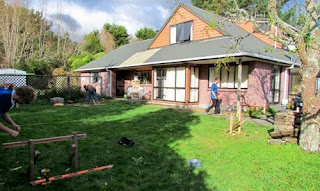BEETROOT (Bull's Blood) by McGregor's
Seeds at 1cm deep, 3cm apart and rows 40cm apart.
Apply McGregor's Fruitmax 2 weeks after germination. Apply McGregor's Derris Dust to combat White Butterfly.
Harvest baby leaves after 30-40 days and the roots after 50-60 days
SPINACH (Hybrid No.7) from McGregor's
Seeds at 1cm deep, 3cm apart and rows 45cm apart.
Apply McGregor's Vegemax 2 weeks after germination. Apply McGregor's Derris Dust to combat White Butterfly.
Start picking leaves after 25-35 days.
DWARF FRENCH GREEN BEANS (Top Crop) by McGregor's
Sow 10cm apart, rows 60cm apart and 2cm deep.
Apply McGregor's Fruitmax 2 weeks after germination. Protect from White Butterfly with McGregor's Derris Dust.
Pick regularly when pods are young, to obtain over 6 weeks of continual cropping.
DWARF FRENCH GREEN BEANS (Admires)
Sow seeds 2cm deep, 15cm apart in rows 60cm apart.
Apply McGregor's Fruitmax 2 weeks after germination. Protect from White Butterfly with McGregor's Derris Dust.
BABY CARROTS (Parisian Market)
Sow seeds 1cm deep, thinly in rows 30cm apart.Thin carrots twice, firstly to 2cm apart and then to 5cm apart 2-3 weeks later.
Apply McGregor's Fruitmax 2 weeks after germination. Protect from White Butterfly with McGregor's Derris Dust.
RADISH (Highlight)
Sow seeds 1cm deep, in rows 30cm apart.
Apply McGregor's Fruitmax 2 weeks after germination. Protect from White Butterfly with McGregor's Derris Dust.
Sow the radishes every three weeks , varying the location as a precaution against pests and diseases.
PAK CHOI (Mei Quing Choi F1 Hybrid)
Sow seeds 5mm deep, 2 cm apart in rows 40cm apart.
Apply McGregor's Vegemax 2 weeks after germination. Protect from White Butterfly with McGregor's Derris Dust.
When the seedlings are large enough, thin them to 25cm apart.
SNOW PEAS
Sow seeds to a depth of 2-3cm , 6-8cm apart, with 60-80cm between rows
Apply McGregor's Fruitmax 2 weeks after germination. Protect from White Butterfly with McGregor's Derris Dust.
Provide a support trellis. Harvest in 9 -10 weeks.
CABBAGE (Golden Acre)
Sow seeds to a depth of 5mm , 3cm apart, with 45cm between rows
Provide a support trellis. Harvest in 9 -10 weeks.
CABBAGE (Golden Acre)
Sow seeds to a depth of 5mm , 3cm apart, with 45cm between rows
Apply McGregor's Vegemax 2 weeks after germination. Protect from White Butterfly with McGregor's Derris Dust.
Provide a support trellis. Harvest in 9 -10 weeks.
Provide a support trellis. Harvest in 9 -10 weeks.
ZUCCHINI (Blackjack) by Yates
Row space 70cm, with maturity 6-8 weeks.
-------------------------------------------------------------------------------------
In the Pohutukawa Bed, 10 November, we sowed:
ROCKET (Large Leaf)
Germination 10-14 days
Apply Yates Thrive Plant Food at weekly intervals
SWEET BASIL



















































